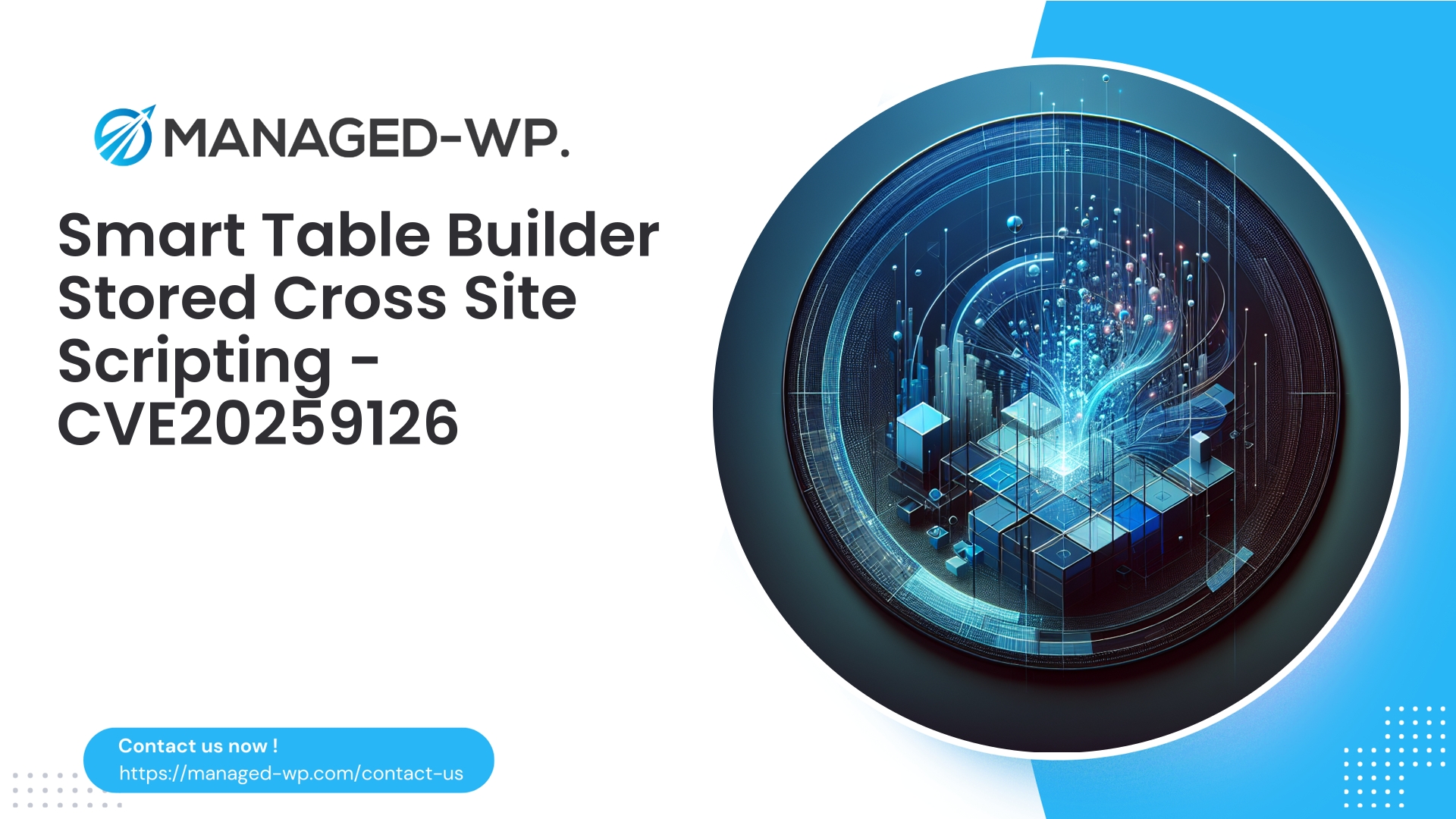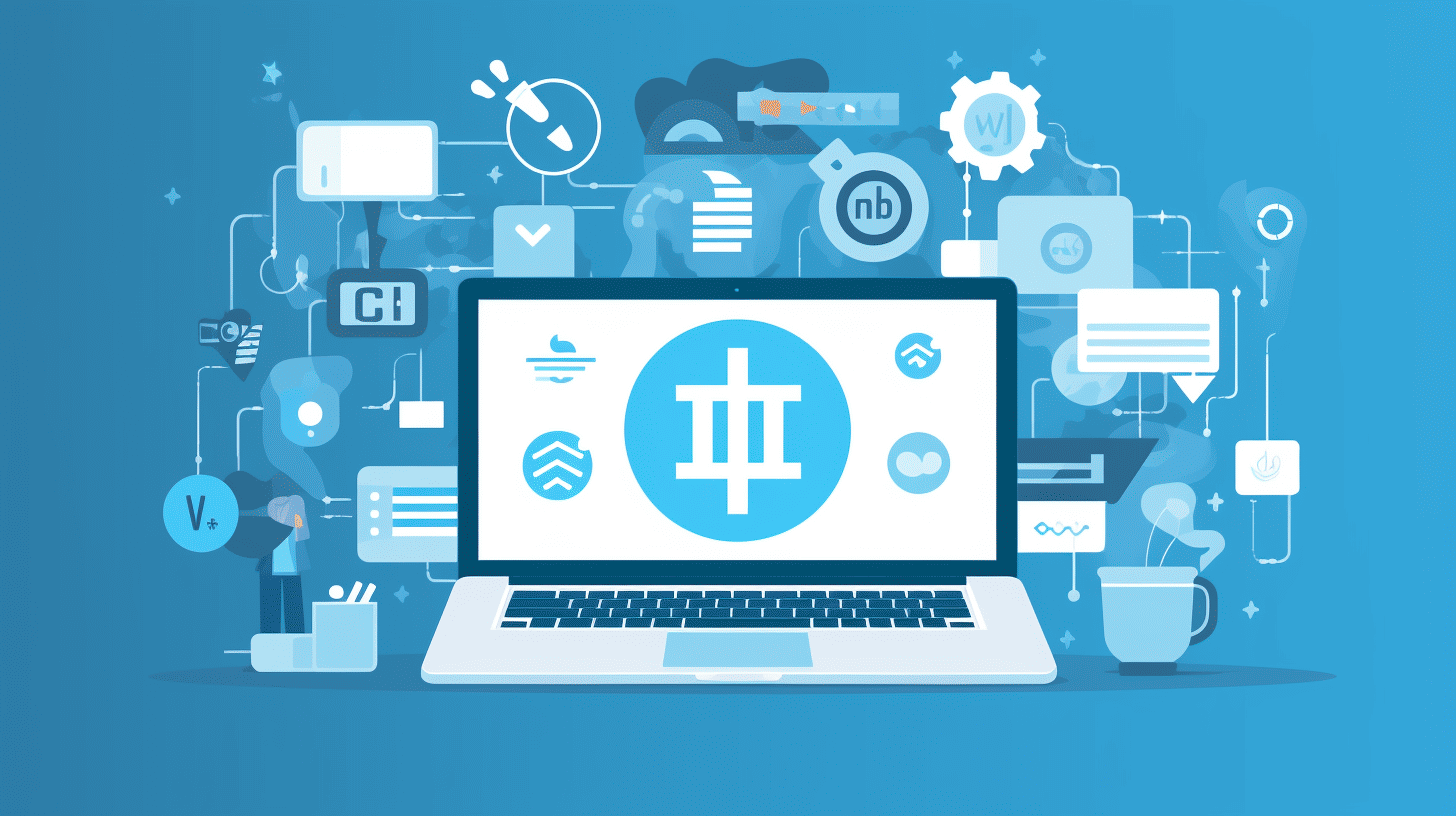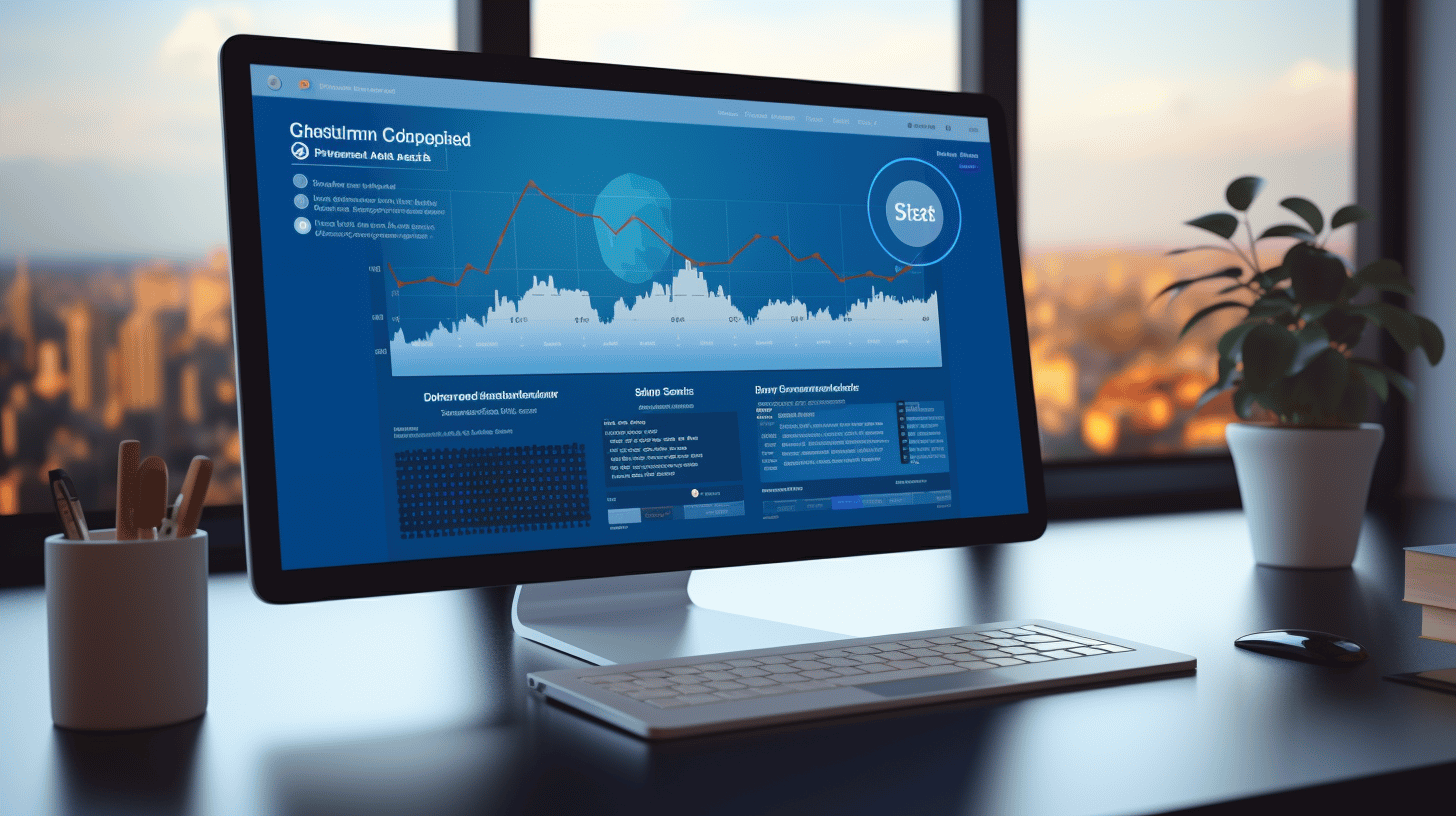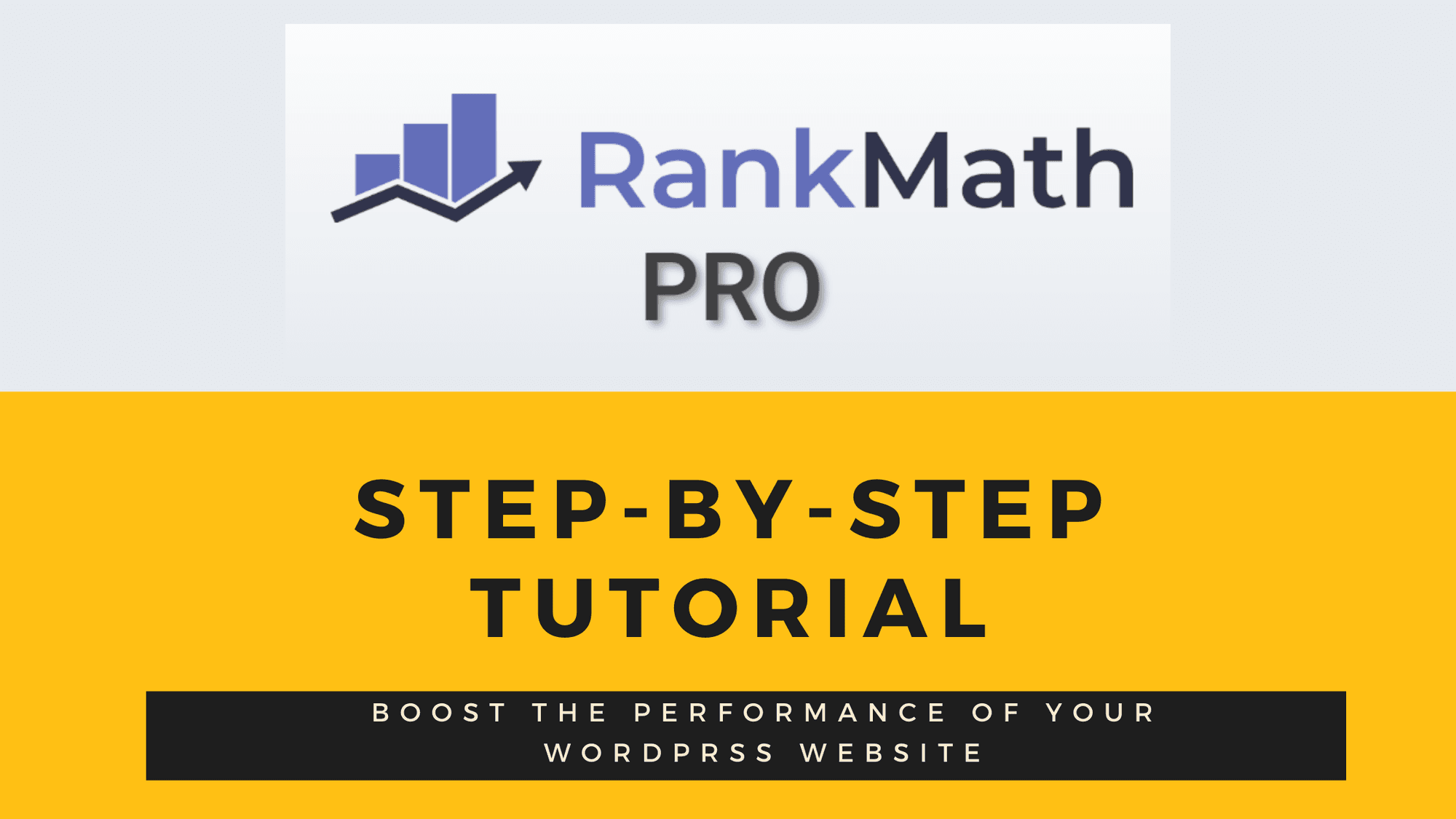| 插件名称 | 智能表格生成器 |
|---|---|
| 漏洞类型 | 存储型XSS |
| CVE编号 | CVE-2025-9126 |
| 紧急 | 低的 |
| CVE 发布日期 | 2025-09-06 |
| 源网址 | CVE-2025-9126 |
已认证贡献者在 Smart Table Builder (<=1.0.1) 中存在存储型 XSS 漏洞 — WordPress 网站所有者重要安全公告
作者:Managed-WP 安全专家 | 2025年9月6日 | 分类:安全、漏洞、WordPress
概要:CVE-2025-9126 识别出的存储型跨站脚本 (XSS) 漏洞影响 Smart Table Builder WordPress 插件的 1.0.1 及更早版本。此漏洞允许具有贡献者级别访问权限的已认证用户通过注入恶意标记来攻击 WordPress 插件。
ID插件随后会存储并渲染该参数,但未进行适当的清理。此漏洞已在 1.0.2 版本中修复。这份全面的安全指南涵盖风险评估、利用途径、检测方法、即时修复措施和战略防御——包括 Managed-WP 的安全解决方案如何在补丁发布前帮助保护网站。
关键细节概览
- 插件: 智能表格生成器
- 易受攻击的版本: <= 1.0.1
- 已修复版本: 1.0.2
- CVE标识符: CVE-2025-9126
- 漏洞类型: 存储型跨站脚本攻击(XSS)
- 所需权限: 已认证贡献者角色
- 严重程度(CVSS): 中等,6.5(视上下文而定)
- 发现者: 安全研究员
了解风险:简明英语解释
存储型跨站脚本攻击 (Storage XSS) 指的是攻击者可以将恶意脚本代码永久插入网站,然后在访问受影响页面的其他用户的浏览器中运行。在这种情况下,拥有“贡献者”权限(访客作者或社区成员的常见角色)的恶意攻击者可以利用该漏洞。 ID Smart Table Builder 插件中存在一个输入字段,用于注入精心构造的 HTML 或 JavaScript 代码。该插件存储这些不安全的输入时未进行充分的清理,导致管理员或访客加载受感染的内容时,代码就会执行。
这种威胁尤其值得关注,因为贡献者通常是值得信赖的用户,他们可以提交内容但无法立即发布。然而,这种注入是持久性的,如果被正确利用,可能导致权限提升、网站被攻破或数据被盗。
潜在影响和攻击场景
此类漏洞之所以重要,是因为它具有多功能性和持久性。攻击者可能:
- 窃取会话 cookie,从而实现用户身份冒充,尤其是在 cookie 安全设置薄弱的情况下。
- 如果网站管理员查看了受感染的页面,则代表网站管理员执行未经授权的操作——这可能会导致网站被接管。
- 篡改网站或插入恶意重定向和SEO垃圾内容。
- 通过注入恶意脚本来建立隐蔽的后门,这些恶意脚本可以针对网站选项或创建恶意管理员帐户。
- 损害品牌声誉,遭受搜索引擎优化惩罚,并泄露敏感数据。
攻击者需要一个贡献者帐户才能利用此漏洞。这可以通过注册(如果帐户开放)或利用凭据重用或社交工程手段入侵合法帐户来获得。
攻击流程:攻击可能如何展开
- 在目标 WordPress 安装上注册或盗用贡献者帐户。
- 使用智能表格生成器界面来创建或编辑内容,其中
ID可以通过操纵参数来嵌入恶意标记。 - 提交输入内容,该内容将未经清理地存储在插件的数据库表中。
- 当管理员或网站访问者加载受影响的表格或页面时,嵌入的恶意代码会在他们的浏览器中执行。
- 然后,该有效载荷可以窃取凭据、执行管理员级别的操作或传播进一步的恶意活动。
注意:为了鼓励负责任的披露并专注于防御,我们不在此处分享漏洞利用代码。
如何检测您的网站是否存在漏洞
使用 Smart Table Builder 1.0.1 或更早版本网站所有者应将自己的网站视为存在风险,直到证明并非如此为止。
建议的检测步骤包括:
- 请验证插件版本:
- 进入 WordPress 控制面板 > 插件 > 已安装插件,确认 Smart Table Builder 的版本。
- 审核插件数据:
- 查询数据库中与智能表格生成器相关的表格,查找可疑内容,尤其要查找注入的脚本或内联事件处理程序,例如:
错误. - 示例检查(适用于熟悉 WP-CLI 或 phpMyAdmin 的管理员):
wp> SELECT ID, post_title FROM wp_posts WHERE post_content LIKE '%
- 查询数据库中与智能表格生成器相关的表格,查找可疑内容,尤其要查找注入的脚本或内联事件处理程序,例如:
- 评估被分配“贡献者”角色的用户的合法性,并验证是否存在未知帐户。
- 分析服务器和应用程序日志,查找涉及可疑 POST 请求的情况。
ID包含嵌入式脚本内容的参数。
- 利用强大的扫描工具检测 HTML 和数据库内容中存储的 XSS 有效载荷标志。
- 检查插件渲染的页面中是否存在意外的内联脚本、可疑的 HTML 元素或奇怪的行为。
立即采取补救措施
- 更新智能表格生成器: 请立即升级到 1.0.2 或更高版本。这是最有效的解决方法。
- 如果无法立即进行修补:
- 实施临时缓解策略,例如限制贡献者权限和限制用户注册。
- 利用 Managed-WP 中的虚拟补丁和托管 WAF 规则(详见下文)。
- 进行全面审计:
- 搜索并删除插件相关数据库条目和帖子内容中发现的恶意脚本。
- 彻底调查任何可疑活动或剥削迹象。
- 轮换凭证:
- 强制对可能存在安全风险的用户(特别是贡献者和管理员)重置密码。
- 强化会话 cookie:
- 确保 cookie 配置了 HttpOnly、Secure 和 SameSite 属性,以缓解通过 JavaScript 进行的会话劫持。
- 启用多因素身份验证(MFA):
- 要求所有管理员和特权账户启用多因素身份验证 (MFA),以增加额外的安全保障。
托管式WP虚拟补丁和WAF保护
对于无法及时更新的网站,Managed-WP 提供高级 Web 应用程序防火墙 (WAF) 和虚拟补丁服务,以降低暴露窗口期内的风险:
- 阻止或清除可疑信息
ID包含脚本或 HTML 标签的参数输入。 - 拒绝来自嵌入可执行内容的贡献者帐户的与插件端点关联的恶意 POST 请求。
- 应用响应强化技术,从插件渲染的输出中移除内联脚本。
- 部署针对数据库支持的内容中观察到的存储型 XSS 模式的检测警报。
Managed-WP 如何为您提供帮助:
- 针对常见的 XSS 注入技术进行优化的托管防火墙规则。
- 全面扫描恶意软件,涵盖文件和数据库内容。
- OWASP Top 10 漏洞缓解措施开箱即用。
在准备进行全面的插件更新和清理工作时,建议采用 Managed-WP 的安全堆栈作为临时控制措施。
长期国防战略和最佳实践
解决这个问题需要的不仅仅是一个补丁。采取以下措施将有助于降低未来出现类似风险的可能性:
- 最小特权原则: 限制贡献者角色权限,尤其要避免在缺乏清理的情况下输入原始 HTML/脚本。
- 输入过滤和输出编码: 确保所有输入在保存时都经过验证,并且输出在渲染时都经过正确转义,以防止 XSS 攻击。
- 持续更新: 对 WordPress 核心、主题和插件保持严格的补丁管理计划。
- 利用托管式 WAF: 持续部署WAF以阻止攻击尝试并提供虚拟补丁。
- 限制 HTML 使用: 只有受信任的用户才能提交 HTML,同时还要配合过滤器来清除危险标签。
- 活动监控: 实施日志记录、完整性检查和访问审计,以便及早发现异常情况。
- 完善的备份和事件响应计划: 维护最新备份并制定可行的响应流程。
- 安全编码实践: 插件开发者应该实现如下 API 功能:
wp_kses,esc_html并进行严格的参数验证,以防止存储不安全的内容。
安全的数据库和内容清理程序
- 备份所有数据: 在进行任何调查或补救措施之前,请执行完整的站点备份。
- 在预发布环境中进行测试: 使用测试副本识别并删除恶意内容,防止意外中断实际运行。
- 识别恶意内容: 搜索
标签、事件处理程序等错误以及文章和插件表中的可疑外部脚本。 - 消毒或移除: 仔细清理或删除受感染的条目;如有必要,可从备份中恢复。
- 重新扫描: 通过全面恶意软件扫描验证清理是否完成。
如果发现管理员权限被盗或数据泄露的证据,请立即联系专业的事件响应服务机构。
监测和检测规则建议
- 监控对插件端点的重复 Web 请求,这些请求的参数中包含脚本标签或事件属性。
- 追踪异常投稿者行为,例如批量提交带有嵌入式脚本的内容。
- 注意插件文件是否发生意外修改或出现可疑的新 PHP 文件。
- 检测服务器指向未知远程主机的出站连接。
- 设置警报,以检测来自国外 IP 地址或意外地理位置的异常 admin-ajax 或插件端点访问。
将这些信号与 SIEM 或集中式日志系统集成,以优化事件检测和响应。
插件开发者安全建议
- 严格验证输入: 对参数强制执行数据类型检查并限制字符集,例如
ID. - 有效转义输出: 始终在渲染时使用 WordPress API 转义用户数据 (
esc_attr,esc_html,esc_url). - 仅允许安全的 HTML: 使用
wp_kses当需要使用 HTML 时,需要使用严格的允许列表。 - 重新审视权限模式: 仅允许受信任的角色注入可执行的 HTML/脚本。
- 嵌入式安全测试: 在开发和持续集成工作流程中集成自动化 XSS 检测和静态分析。
- 制定漏洞披露政策: 提供清晰、公开的安全问题报告渠道,并及时发布补丁。
WordPress网站所有者的实用行动清单
- 确认 Smart Table Builder 版本 <= 1.0.1 — 如果适用,请安排立即更新。
- 将插件升级到 1.0.2 或最新可用版本。
- 审核所有贡献者账户;移除或暂停可疑用户。
- 进行全面的恶意软件和内容扫描。
- 搜索插件和帖子内容,查找注入的脚本标记或可疑的 HTML 属性。
- 如果补丁程序延迟安装,请启用 Managed-WP WAF 或类似的虚拟补丁程序。
- 轮换管理员和贡献者密码;强制执行强凭据和多因素身份验证。
- 配置安全 cookie 标志和安全标头,例如 CSP 和 X-Frame-Options。
- 清理后至少 14 天内,每天进行扫描并持续监测。
- 记录你的发现,如果怀疑存在严重安全漏洞,请咨询事件响应专家。
负责任的漏洞披露至关重要
网站所有者和插件开发者都必须优先考虑负责任地处理安全漏洞。及时修补漏洞、建立透明的沟通渠道以及部署多层防御措施,都能降低整个 WordPress 生态系统面临的风险。
常见问题解答 (FAQ)
问:如果只有受信任的用户才能注册,那么这个漏洞是否仍然构成风险?
答:可信注册可以降低风险,但并不能完全消除风险。被盗用的可信账户或内部威胁仍然是潜在的攻击途径。因此,应用补丁和采取纵深防御措施仍然至关重要。
问:贡献者能否通过此 XSS 漏洞直接创建管理员?
答:并非直接如此。注入的脚本在受害者的浏览器中运行,并利用其权限。如果管理员加载了受感染的内容,该脚本可以代表其执行特权操作,从而实现间接的权限提升。
问:所有存储型 XSS 漏洞的危险性都一样吗?
答:不。影响程度取决于具体情况:恶意代码的执行位置、受影响的受众以及您网站的安全设置(例如,Cookie 标志、内容安全策略)。这些因素都会影响整体严重程度。
问:单独删除插件就能消除风险吗?
答:移除插件可以阻止易受攻击代码的进一步渲染,但无法清除之前存储的恶意内容。内容审核和清理仍然至关重要。
立即使用 Managed-WP Basic(免费套餐)保护您的网站
为了提供即时防御,Managed-WP 提供了一个基础免费方案,其中包括托管防火墙规则、Web 应用程序防火墙 (WAF)、恶意软件扫描以及针对 OWASP Top 10 漏洞的缓解措施。此方案可为您提供流畅的安全防护,同时方便您进行补丁更新和深度清理。
开始使用 Managed-WP Basic(免费)
请在此激活您的免费安全计划: https://my.wp-firewall.com/buy/wp-firewall-free-plan/
轻松升级到高级版本,增加自动恶意软件清除、黑名单、每月安全报告和专为企业环境量身定制的主动虚拟补丁功能。
Managed-WP 安全专家的最后寄语
诸如 Smart Table Builder 存储型 XSS 漏洞之类的事件,鲜明地提醒我们 WordPress 安全中固有的共同责任。快速修补漏洞仍然至关重要,但包括托管式 Web 应用防火墙 (WAF)、严格的内容验证、最小权限控制和严密监控在内的多层防御措施,能够显著降低攻击风险。
如需安全评估、虚拟修补或事件响应方面的帮助,Managed-WP 随时准备支持您网站的安全性和恢复能力。
注意安全。
Managed-WP 安全团队



















